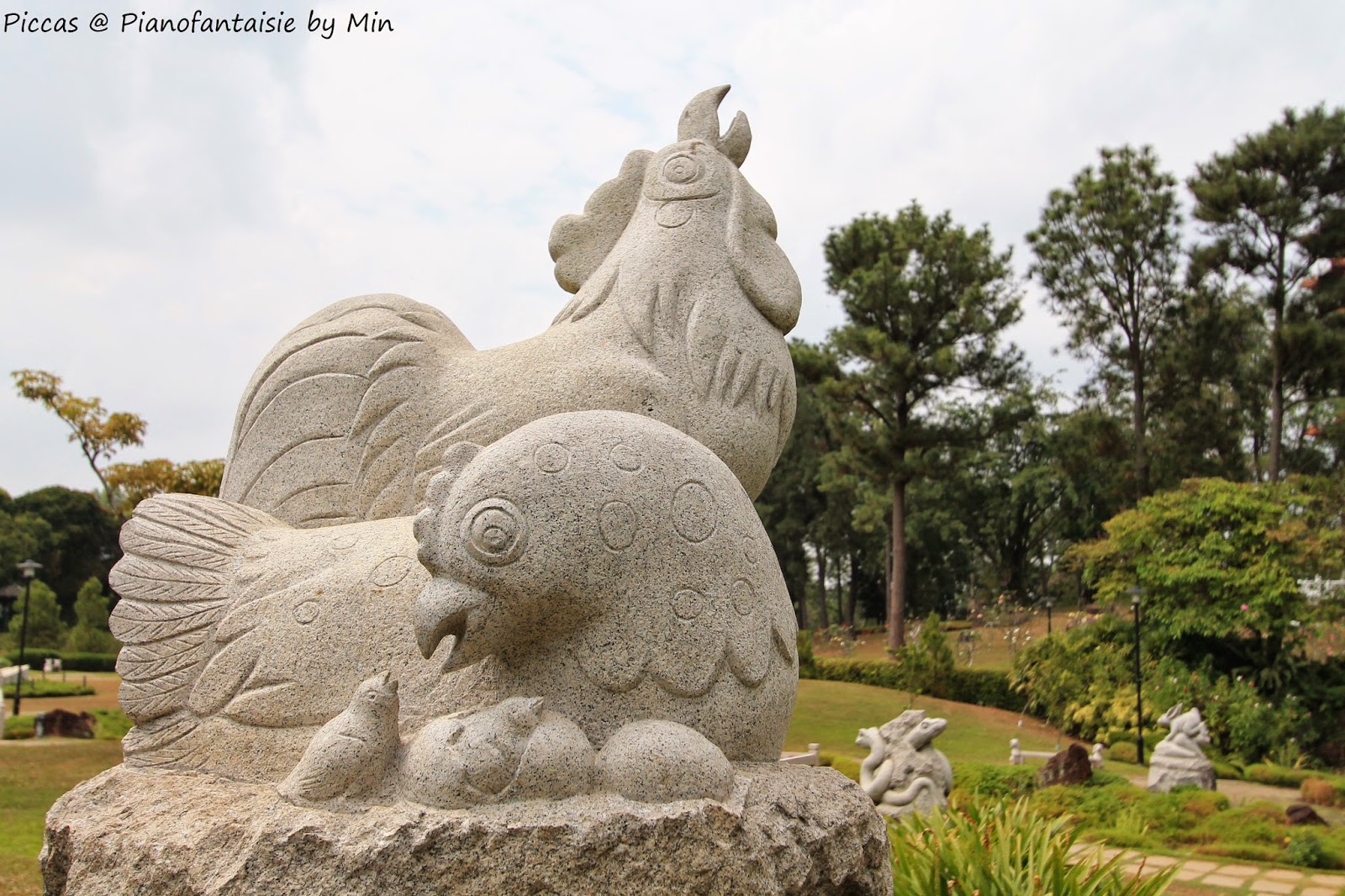Just realised I haven't posted pics from Singapore...for quite some time! I went back to Singapore from December to early February, and during that period, I had the opportunity to visit places which I haven't been to before. One of these was the Chinese Gardens - situated in the outskirts of the city, in the heartlands.
The Chinese Gardens was built in 1975 and designed by a Taiwanese architect. Its architecture was based on Chinese stone art and pagodas. There're three pagodas in the Chinese Gardens (two of which are 'twins') - I managed to climb one of them, which was seven storeys high...
Entered the gates of the Chinese Gardens - and soon came across replicas of the famous Terracotta Warriors (burial objects that were buried along with the First Emperor of Unified China - Qin Shi-Huang - the original Terracotta Warriors were unearthed in the 1970s by a Chinese farmer, and have since been displayed in Xi-an as a large-scale exhibition).
The terracotta warriors were lined up neatly along a staircase, which led up to the seven-storey pagoda I climbed. This pagoda is known as "入云塔" (literally translated as "entering the clouds"), and was designed based on the Ling Ku Temple pagoda in Nanjing.
Here's the spiral staircase which I climbed...it was quite a long one...
Doorknob at the entrance of the pagoda. I remembered this from my parents' wedding pictures - they had their outdoor wedding photoshoot at Chinese Gardens!
Along the way, I spotted some famous figures in Chinese history, including Yue Fei (kneeling down while his mother tattoos 敬忠报国 - "love, respect and loyalty to one's country" on his back, prior to him enlisting for war), Mulan (a lady who impersonated a man to fight in the war), Qu Yuan (a very patriotic figure in Chinese history), Confucius (one of the most well-known Chinese philosophers), and Zheng He (a Chinese explorer, fleet admiral and eunuch who made numerous voyages to Southeast Asia, South Asia, the Middle East and East Africa during the Ming dynasty).
Next stop - the Twin Pagodas - situated at the edge of a small lake. They look pretty much identical! Of course, we could climb up to the top, but I chose not to, after scaling the 7-storey one.
More Chinese inspired architecture along the way. Being in the Chinese Gardens made me feel as if I had been transported to ancient Chinese times - as depicted in many TV shows and movies. Also, the Gardens were so peaceful, and I was happy to roam around as many landmarks as I wished.
One of my buddies told me about this giant statue of Confucius - and I was really happy when I spotted it!
Bonsai Gardens - many beautiful bonsai trees are displayed here, in equally beautiful pots. I think bonsai trees are really adorable! Especially since they're so tiny, yet so intricate. Some of the pots are featured here.
Next destination - the Abundance Garden. This garden was originally known as the Pomegranate and Zodiac Garden. This garden featured the twelve animals of the Chinese Zodiac (mouse, cow, tiger, rabbit, dragon, snake, horse, goat, monkey, rooster, dog and pig), which have been sculpted into adorable stone sculptures. Stone bridges also span across a tiny creek running through the garden.
The sculpture with horses had a red ribbon tied around it - I'm assuming its because 2014 is the year of the horse. And yes - the horse is my Chinese zodiac!
The famous Thirteen Arch bridge - a bridge inspired by the Seventeen Arch Bridge in Beijing's Summer Palace. The bridge maintained characteristics of typical Chinese bridges, and led me to the neighbouring Japanese Gardens - built on a special island on a lake.
First thing I saw when entering the Japanese Gardens - neat rows of beautifully trimmed hedges, and replicas of teahouses - characteristic of the ones in Japan.
Like the Chinese Gardens, the Japanese Gardens was designed to encourage meditation, relaxation and bliss. And that was exactly what I felt when I went there - bliss. The place was so tranquil and peaceful.
There were a number of Toro lanterns scattered around the Japanese Gardens too, alongside traditional Japanese bridges, shelters and ponds. Most of the designs in the Japanese Gardens were inspired by buildings and architectural work from 1392-1568.

























































